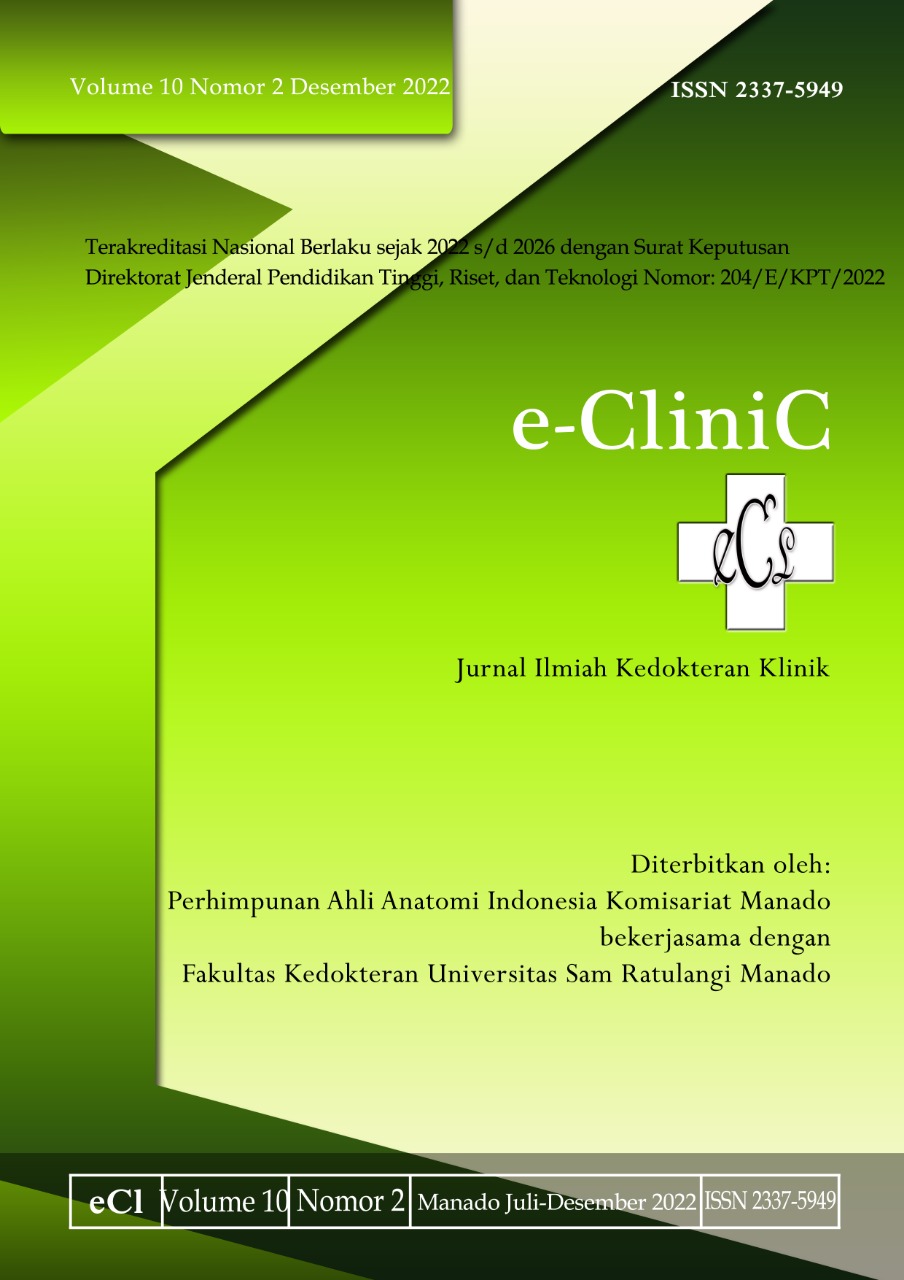Inguinal Hernia in Infant
DOI:
https://doi.org/10.35790/ecl.v10i2.37617Abstract
Abstract: Inguinal hernia in infant is a condition of protrusion of the intestinal organs due to the
patency of processus vaginalis. The ratio of incidence between male and female infants is
approximately 8:1. The incidence of inguinal hernia ranges from 1-5% in children and full-term
infants, whereas in premature infants there is a significant increase in the number, which is around
30%. Clinical manifestations that can occur in infants with inguinal hernias are the appearance of
a lump when straining, crying, coughing, or sneezing, patient could look restless because of the
pain and discomfort. The diagnosis of inguinal hernia can be made by history taking, physical
examination, and supporting examination. Management of inguinal hernia is by surgery, can be
an open herniotomy or laparoscopy.
Keywords: inguinal hernia; infant
Â
Abstrak: Hernia inguinalis pada bayi merupakan kondisi penonjolan organ intestinal akibat
adanya patensi prosesus vaginalis. Perbandingan rasio kejadian antara anak laki-laki dan perempuan
kurang lebih sekitar 8:1. Insidensi hernia inguinalis berkisar 1-5% pada anak dan bayi cukup
bulan, sedangkan pada bayi prematur terdapat kenaikan angka yang bermakna yaitu sekitar 30%.
Manifestasi klinis yang dapat terjadi pada anak dengan hernia inguinalis adalah timbulnya
benjolan pada saat mengedan, menangis, batuk, atau bersin, anak terlihat gelisah karena nyeri dan
rasa tidak nyaman. Penegakan diagnosis hernia inguinalis dapat dilakukan dengan anamnesis,
pemeriksaan fisik, dan pemeriksaan penunjang. Tatalaksana hernia inguinalis ialah dengan
herniotomi terbuka atau laparoskopi.
Kata kunci: hernia inguinalis; bayi
Downloads
Additional Files
Published
How to Cite
Issue
Section
License
COPYRIGHT
Authors who publish with this journal agree to the following terms:
Authors hold their copyright and grant this journal the privilege of first publication, with the work simultaneously licensed under a Creative Commons Attribution License that permits others to impart the work with an acknowledgment of the work's origin and initial publication by this journal.
Authors can enter into separate or additional contractual arrangements for the non-exclusive distribution of the journal's published version of the work (for example, post it to an institutional repository or publish it in a book), with an acknowledgment of its underlying publication in this journal.
Authors are permitted and encouraged to post their work online (for example, in institutional repositories or on their website) as it can lead to productive exchanges, as well as earlier and greater citation of the published work (See The Effect of Open Access).







